Do you have a question about the Sony HDW-F500 and is the answer not in the manual?
Details the HDCAM format, digital signal processing, and interfaces of the recorder.
Illustrates the physical layout of the upper and lower control panels of the VTR.
Details the functions and indicators on the VTR's upper control panel.
Details the various input and output connectors on the VTR's rear panel.
Provides examples for connecting external devices to the VTR for various operations.
Explains how to store and recall VTR settings using memory banks and memory cards.
Details how to navigate menus and change settings using function and cursor buttons.
Sets basic VTR operation conditions for recording, playback, and editing.
Allows setting and managing time code related items through a single menu.
Configures time data display types, resetting, setting, and holding time counters.
Configures the source and mode for the internal or external time code generator.
Allows registering up to 100 cue points and managing them in groups per page.
Details methods for registering cue points using ENTRY button or numeric buttons.
Details the factory default settings for the PF1 menu, primarily for video adjustments.
Adjusts various video output signal parameters like master level, Y, PB, PR, setup, and sync phase.
Details the factory default settings for the PF2 menu, primarily for audio adjustments.
Allows storing/recalling settings, registering PF items, and setting VTR/Panel configurations.
Contains all menu items for setting up the VTR's operating conditions.
Outlines the necessary switch and menu settings before starting a recording.
Details the specific switches and menu settings required before recording.
Guides on selecting audio input signals and channels for input and monitoring.
Explains how to adjust the audio recording level, with reference or specific levels.
Provides a step-by-step guide on how to perform a recording operation.
Outlines switch and menu settings required before starting playback operations.
Details the specific switches and menu settings needed before initiating playback.
Covers various playback modes including normal, variable, jog, shuttle, and DMC.
Details Jog, Shuttle, and Variable modes for controlling playback speed.
Explains DMC playback for varying speed segments and storing them in memory.
Covers automatic editing methods including assemble and insert modes.
Explains the two automatic edit modes: assemble and insert, and CTL counter interpolation.
Details the switch and menu settings required before performing editing operations.
Guides on setting IN and OUT points for recorder and player VTRs.
Allows previewing the effect of edits before performing them automatically.
Explains how to delete or move edit points to correct or adjust them.
Covers advanced editing methods like DMC, animation, and preread editing.
Details how to perform variable speed editing by controlling playback speed via the control panel.
Guides on performing manual editing by positioning tape and setting edit points.
Lists detailed technical specifications for the VTR's general, tape, video, and analog systems.
Explains error messages, protection mode, and lists common error codes.
Provides a categorized list of VTR SETUP menu items, their settable ranges, and functions.
Details the HDCAM format, digital signal processing, and interfaces of the recorder.
Illustrates the physical layout of the upper and lower control panels of the VTR.
Details the functions and indicators on the VTR's upper control panel.
Details the various input and output connectors on the VTR's rear panel.
Provides examples for connecting external devices to the VTR for various operations.
Explains how to store and recall VTR settings using memory banks and memory cards.
Details how to navigate menus and change settings using function and cursor buttons.
Sets basic VTR operation conditions for recording, playback, and editing.
Allows setting and managing time code related items through a single menu.
Configures time data display types, resetting, setting, and holding time counters.
Configures the source and mode for the internal or external time code generator.
Allows registering up to 100 cue points and managing them in groups per page.
Details methods for registering cue points using ENTRY button or numeric buttons.
Details the factory default settings for the PF1 menu, primarily for video adjustments.
Adjusts various video output signal parameters like master level, Y, PB, PR, setup, and sync phase.
Details the factory default settings for the PF2 menu, primarily for audio adjustments.
Allows storing/recalling settings, registering PF items, and setting VTR/Panel configurations.
Contains all menu items for setting up the VTR's operating conditions.
Outlines the necessary switch and menu settings before starting a recording.
Details the specific switches and menu settings required before recording.
Guides on selecting audio input signals and channels for input and monitoring.
Explains how to adjust the audio recording level, with reference or specific levels.
Provides a step-by-step guide on how to perform a recording operation.
Outlines switch and menu settings required before starting playback operations.
Details the specific switches and menu settings needed before initiating playback.
Covers various playback modes including normal, variable, jog, shuttle, and DMC.
Details Jog, Shuttle, and Variable modes for controlling playback speed.
Explains DMC playback for varying speed segments and storing them in memory.
Covers automatic editing methods including assemble and insert modes.
Explains the two automatic edit modes: assemble and insert, and CTL counter interpolation.
Details the switch and menu settings required before performing editing operations.
Guides on setting IN and OUT points for recorder and player VTRs.
Allows previewing the effect of edits before performing them automatically.
Explains how to delete or move edit points to correct or adjust them.
Covers advanced editing methods like DMC, animation, and preread editing.
Details how to perform variable speed editing by controlling playback speed via the control panel.
Guides on performing manual editing by positioning tape and setting edit points.
Lists detailed technical specifications for the VTR's general, tape, video, and analog systems.
Explains error messages, protection mode, and lists common error codes.
Provides a categorized list of VTR SETUP menu items, their settable ranges, and functions.
| Video Format | HDCAM |
|---|---|
| Audio Channels | 4 |
| Control Interface | RS-422 |
| Tape Speed | 96.7 mm/s |
| Power Requirements | AC 100 V to 240 V, 50/60 Hz |
| Audio Format | 20 bit/48kHz |




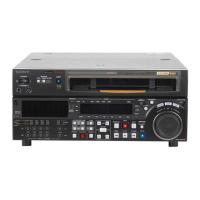
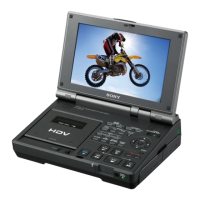

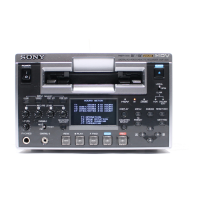

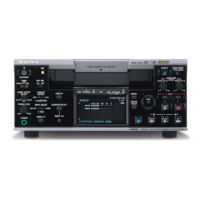
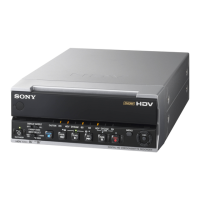

